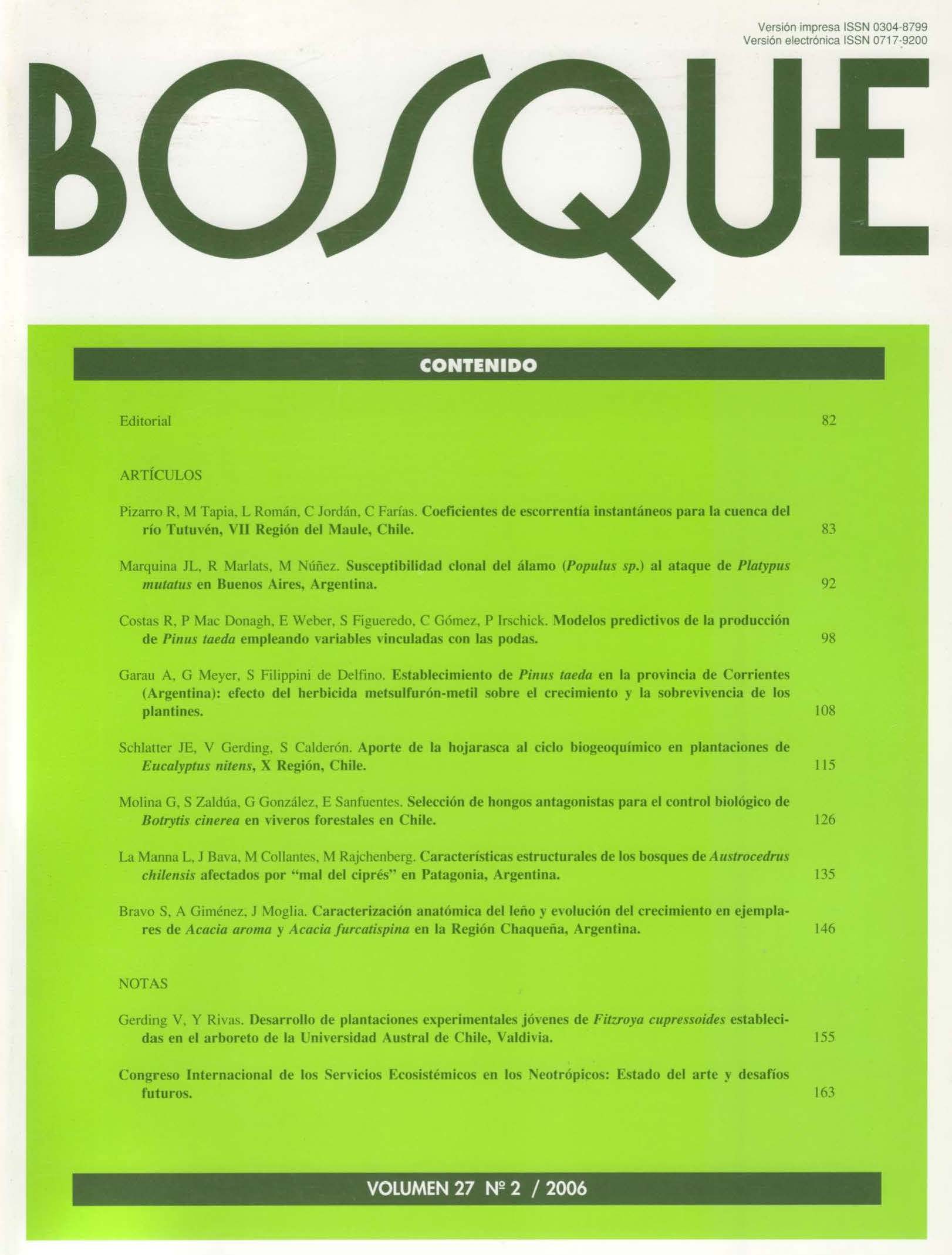Main Article Content
Aug 31, 2006
Abstract
Spatial distribution of Austrocedrus chilensis forests includes an area of high climatic, topographic and edaphic heterogeneity. These forests suffer a widespread mortality, locally known as “Andean cypress disease” (mal del ciprés). In this study the stand structure of A. chilensis forests affected by the disease was characterized, covering a range of soils. Three types of stand structure were found: (a) stands with dominance of trees with diameter at 1.30 m height (DBH) lower than 15 cm, with low values for basal area and height in dominant trees, associated to non volcanic or non allophanized soils; (b) stands with predominance of trees with DBH from 5 to 35 cm, with intermediate values for basal area and height in dominant trees, associated to allophanized volcanic soils; (c) stands with predominance of trees with DBH from 5 to 45 cm and with gross trees which survived old fires, with the greatest values for basal area and height in dominant trees, associated to sites near streams presenting alluvial or volcanic soils. “Andean cypress disease” was detected in the three stand structure types, suggesting that the disease is not restricted to a particular structure.


